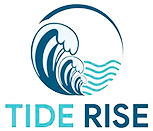In the journey towards financial security and a comfortable retirement, understanding the tools at your disposal is crucial. One such tool that plays a pivotal role for many Americans is the 401(k) retirement plan. Introduced in the late 1970s, the 401(k) has become a cornerstone of retirement savings, offering individuals a tax-advantaged way to build a nest egg for their golden years. This article aims to shed light on the intricacies of 401(k) plans, exploring their benefits, features, and strategies for maximizing their potential.
What is a 401(k)?
A 401(k) is a tax-advantaged retirement savings plan sponsored by employers. Named after a section of the U.S. Internal Revenue Code, this plan allows employees to contribute a portion of their pre-tax income to a designated investment account. Over time, these contributions, along with any employer matches and investment gains, accumulate to provide a source of income during retirement.
Key Features of 401(k) Plans:
- Pre-tax Contributions:
- One of the primary advantages of a 401(k) is that contributions are made with pre-tax dollars, reducing the individual’s taxable income for the year. This can result in immediate tax savings and allows for more money to be invested.
- Employer Matching:
- Many employers offer a matching contribution to their employees’ 401(k) plans. This is essentially free money, and individuals are encouraged to contribute at least enough to take full advantage of the employer match. The specifics of the match vary between employers.
- Tax-Deferred Growth:
- Investments within a 401(k) grow tax-deferred, meaning that individuals do not pay taxes on capital gains, dividends, or interest earned within the account until they withdraw the funds during retirement. This can significantly boost the growth of the investment over time.
- Contribution Limits:
- The IRS sets annual contribution limits for 401(k) plans. As of my last knowledge update in January 2022, for individuals under the age of 50, the limit is $19,500 per year, while those 50 and older can contribute an additional catch-up contribution, bringing the total to $26,000.
- Vesting:
- Vesting refers to the ownership of employer contributions. While employee contributions are always fully vested, employer contributions may be subject to a vesting schedule, meaning that employees need to work a certain number of years to claim full ownership of the employer-contributed funds.
Strategies for Maximizing 401(k) Benefits:
- Start Early and Contribute Consistently:
- The power of compounding is most effective when time is on your side. Starting to contribute to a 401(k) early in your career and consistently contributing over time can have a significant impact on your retirement savings.
- Diversify Your Investments:
- Most 401(k) plans offer a range of investment options. Diversifying your investments across different asset classes can help manage risk and optimize returns. Consider your risk tolerance and investment horizon when selecting funds.
- Take Advantage of Employer Match:
- If your employer offers a matching contribution, contribute at least enough to maximize this benefit. It’s essentially free money that can substantially boost your retirement savings.
- Review and Adjust Your Portfolio:
- Regularly review your 401(k) portfolio to ensure it aligns with your financial goals and risk tolerance. Adjust your asset allocation as needed, especially as you approach retirement.
Conclusion:
A 401(k) plan is a valuable tool for building a secure financial future. By understanding its features, taking advantage of employer contributions, and implementing sound investment strategies, individuals can navigate the path to a comfortable retirement. As with any financial decision, seeking guidance from a financial advisor is recommended to tailor your approach to your specific circumstances and goals.




